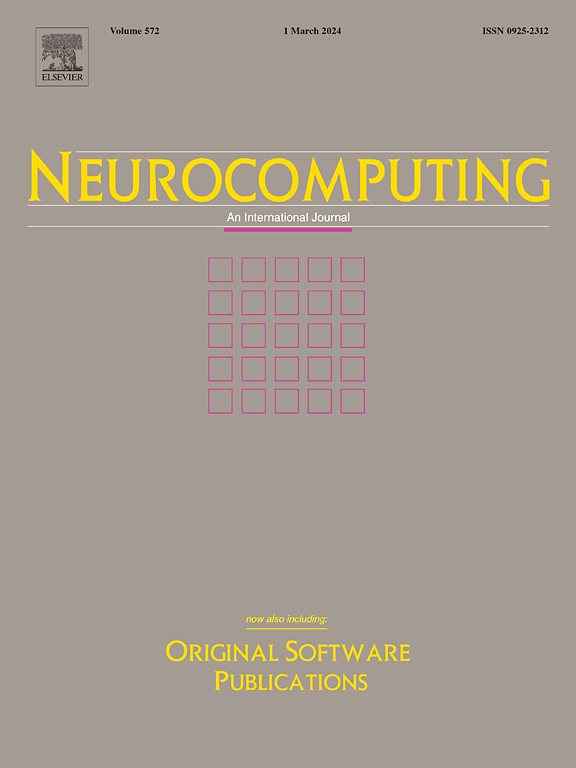在高光谱异常检测中,通过自我监督可解释的频带较少
IF 5.5
2区 计算机科学
Q1 COMPUTER SCIENCE, ARTIFICIAL INTELLIGENCE
引用次数: 0
摘要
高光谱波段选择(BS)算法旨在识别与模型决策相关的最重要波段。虽然现有方法可以有效地对不同波段进行重要性分配,但由于缺乏预定义标签来指导选择过程,因此在无监督高光谱异常检测(AD)中面临挑战。本文通过提出一种自我监督的方法来解决这些挑战,该方法用于识别较少的可解释波段,从而最好地分离背景和异常数据。通过将波段选择描述为基于伪异常的子集选择问题,基于高置信度、丰富的特征多样性和相互协作来选择波段。具体来说,利用伪异常和相应的地图,通过自监督策略来识别高置信度的波段。为了进一步增强波段之间的特征多样性和协同性,我们对子集的选择施加了特征多样性约束,并对各子集的协同能力进行了评估。设计了一种新的评价函数来发现更多有用的AD波段。实验证明了每个模块的有效性,并表明该方法在四个不同的数据集上选择了有利于AD的频带。该代码发布在https://github.com/rk-rkk/Fewer-Interpretable-Bands-for-Hyperspectral-Anomaly-Detection。本文章由计算机程序翻译,如有差异,请以英文原文为准。

Fewer interpretable bands via self-supervision for hyperspectral anomaly detection
Hyperspectral band selection (BS) algorithms aim to identify the most important bands relevant to model decisions. While existing methods can effectively assign importance to different bands, they face challenges in unsupervised hyperspectral anomaly detection (AD) due to the lack of predefined labels to guide the selection process. This paper addresses these challenges by proposing a self-supervised approach for identifying fewer interpretable bands that best separate background and anomalous data. By formulating band selection as a subset selection problem using pseudo-anomalies, bands are chosen based on high confidence, rich feature diversity, and inter-collaboration. Specifically, the pseudo-anomalies and the corresponding map are utilized to identify bands with high confidence through a self-supervised strategy. To further enhance feature diversity and collaboration among bands, we impose a feature diversity constraint on the selection of subsets and assess the collaboration ability of various subsets. A novel evaluation function is designed to discover more useful bands for AD. Experiments demonstrate the effectiveness of each module and show that the proposed method selects bands that are beneficial for AD across four different datasets. The code is released at https://github.com/rk-rkk/Fewer-Interpretable-Bands-for-Hyperspectral-Anomaly-Detection.
求助全文
通过发布文献求助,成功后即可免费获取论文全文。
去求助
来源期刊

Neurocomputing
工程技术-计算机:人工智能
CiteScore
13.10
自引率
10.00%
发文量
1382
审稿时长
70 days
期刊介绍:
Neurocomputing publishes articles describing recent fundamental contributions in the field of neurocomputing. Neurocomputing theory, practice and applications are the essential topics being covered.
 求助内容:
求助内容: 应助结果提醒方式:
应助结果提醒方式:


